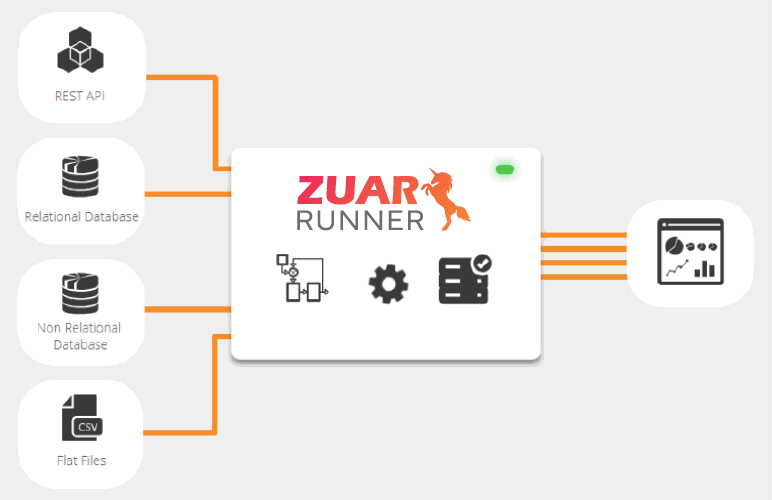What Is Data Transparency? Tools, Methods & More
Learn how you can implement data transparency to foster a data-driven culture of trust within your organization.

What Is Data Transparency?
In today’s data-driven world, data transparency plays a crucial role in establishing trust and fostering collaboration among stakeholders. Companies that prioritize transparency in their operations can reap significant benefits, from improved employee engagement to increased customer loyalty.
In this article, we’ll explore the essence of data transparency and discuss best practices for implementing it in the workplace.
Key Takeaways
- Data transparency is essential for businesses to adhere to global data governance rules and increase consumer loyalty.
- Key components include honesty, consistency, and availability of information. Stakeholders can make more informed decisions with improved communication & efficiency.
The Importance of Data Transparency
Data transparency signifies the accessibility of data to stakeholders in an unambiguous and candid manner. This openness is vital for establishing trust and encouraging collaboration among stakeholders, involving effective communication, open access to information, and accountability.

In fact, 94% of consumers consider it important to understand how brands use their information and wish to have more control over their data, making data transparency a crucial factor in fostering customer trust and loyalty.
Moreover, data transparency facilitates businesses in meeting global data governance rules and positively impacts company culture.
By motivating consumers to share information, organizations can align with their company values and offer rewards such as discounts, services, or products in exchange for the information. Fundamentally, data transparency fosters an open and trusted environment, benefiting all stakeholders.
Key Components of Data Transparency
Honesty, consistency, and availability of information are the core elements of data transparency. These components are critical in striving for complete transparency in data sharing, allowing stakeholders to deliver feedback and improve processes.
By maintaining open and honest communication, organizations can create a reliable and open atmosphere that benefits not only employees but also other stakeholders, such as customers and partners.
The Impact on Stakeholders
Data transparency positively impacts stakeholders by nurturing trust, collaboration, and informed decision-making, consequently leading to enhanced outcomes for all parties involved.
When stakeholders can easily access and understand the data, they can make better decisions and provide valuable input that can further enhance the organization’s success.
Fostering trust, collaboration, and informed decision-making among stakeholders can lead to more beneficial outcomes, including enhanced communication, increased efficiency, and more effective decision-making.
Ultimately, companies that embrace data transparency create an environment where stakeholders feel confident in the information and data insights they receive and are empowered to contribute to the organization’s success.

Achieving Data Transparency in the Workplace
Transparency in the workplace involves providing clear communication and allowing open access to information, playing a pivotal role in creating a positive work environment.
Establishing transparency within an organization assists employees in comprehending what is required of them, how to implement it, and how to hold one another responsible.
Workplace transparency has been shown to enhance morale, reduce job-related stress, increase employee satisfaction, and improve performance.
This section will delve into various methods to achieve data transparency in the workplace. It will cover topics such as promoting open communication, implementing data transparency tools, and encouraging constant improvement through feedback.
Promoting Open Communication
Open communication is the practice of exchanging ideas, posing queries, and expressing concerns without apprehension of consequences.
In the workplace, open communication fosters trust between employees and managers, thereby facilitating communication and collaboration. This, in turn, can result in improved employee satisfaction, engagement, and productivity.
Strategies for fostering open communication in the workplace could encompass encouraging employees to question and provide feedback, organizing all-hands meetings, and using employee survey software to gather viewpoints.
Cultivating a data-driven culture of open communication enables organizations to foster a transparent and supportive work environment that encourages trust and collaboration among team members.
Implementing Data Transparency Tools
Data transparency tools are software solutions or platforms designed to provide visibility into data collection, processing, and usage practices within an organization.

They enable businesses and their customers to understand how data is being handled, ensuring compliance with data protection regulations and fostering trust by clarifying data governance policies.
These tools can track data lineage, display data usage and consent preferences, and provide reports or dashboards for both internal stakeholders and external users.
By implementing data transparency tools, organizations can not only adhere to legal requirements but also empower users by giving them control over their personal data, thus aligning with modern expectations of ethical data management and consumer rights.
Continuous Improvement Through Feedback
Encouraging continuous improvement through feedback provides employees with an understanding of their performance and areas for growth.
Feedback plays a vital role in workplace transparency, as it enables employees to offer their insights on their performance, leading to more effective solutions.
Ongoing performance feedback is a constructive, job-relevant form of feedback that enables employees to:
- Stay informed of their performance without any unexpected surprises
- Recognize their performance and areas for development
- Promote ongoing improvement
- Create a transparent and encouraging work atmosphere that fosters growth and learning

Data Transparency Best Practices
Effective data collection and management necessitate gathering relevant data, assuring data integrity, and complying with pertinent regulations to foster transparency and trust.

By adhering to these best data practices, organizations can maintain a transparent approach to data management, which promotes trust and collaboration among stakeholders.
This section will delve into the best practices for data collection and management. It will cover topics including collecting relevant data, ensuring data integrity, and complying with regulations such as GDPR and CCPA.
Collecting Relevant Data
To collect data effectively, organizations should focus on gathering relevant information, which helps them concentrate on key insights and reduces storage and analysis costs, while still providing a unique experience for each stakeholder.
Establishing research objectives and identifying data sources are crucial steps in crafting your data strategy. Organizations should clearly articulate their objectives and leverage multiple sources to gather pertinent information.
Maintaining data privacy and security, along with utilizing standardized data formats, is crucial to guaranteeing data quality and avoiding costly errors such as security breaches or identity theft.
Ensuring Data Integrity
Data integrity refers to the assurance that data is accurate, complete, and consistent. To ensure data integrity, organizations should implement consistent processes for data management to reduce the risk of data loss or corruption.
Maintaining accurate and consistent data allows organizations to provide stakeholders with reliable information for decision-making and collaboration.
Organizations can mitigate the risk of data loss or corruption by implementing data backup and recovery systems, utilizing encryption to secure data, and conducting periodic audits of data.
Ensuring data integrity is a crucial aspect of data transparency, as it provides stakeholders with confidence in the information they receive and use.
Complying With Regulations
Compliance with data protection regulations, such as GDPR and CCPA, demonstrates a commitment to data transparency.
These regulations mandate organizations to maintain data organization and provide individuals with information on collected data upon request.
Adherence to data protection policies can foster trust among stakeholders, indicating a dedication to data transparency. It also helps ensure that data is collected and used appropriately, minimizing the risk of non-compliance penalties and fostering a strong reputation for the organization.

Transparency-Driven Decision-Making
Transparency-driven decision-making refers to the practice of making decisions in an open and accessible manner, with the rationale and influencing factors communicated to relevant stakeholders.
This approach promotes accountability, trust, and inclusivity in the decision-making process, allowing decisions to be based on objective information and diverse perspectives for more informed and effective outcomes.
This section will delve into the significance of transparency-driven decision-making, encompassing making informed decisions, fostering collaborative decision-making, and ensuring accountability in the process. All these aspects contribute to better outcomes for stakeholders and organizations.
Informed Decisions
Informed decisions are made when stakeholders have access to transparent and accurate data, leading to better outcomes and increased trust.
Data transparency plays a crucial role in decision-making, as it enables stakeholders to make knowledgeable decisions based on precise and transparent data, resulting in improved results.
By adhering to best practices for data ingestion and management, organizations can provide stakeholders with the necessary information to make well-informed decisions. Implementing robust data ingestion and management tools is crucial to maintaining best practices.
That's why we recommend Zuar's ELT platform, Zuar Runner. This solution allows you to manage the flow of data from ingestion to transformation to warehousing, enabling your team to make data-driven decisions with ease and follow best data practices.
Learn more about Zuar Runner...

Collaborative Decision Making
A transparent work environment encourages stakeholders to openly communicate their ideas and opinions, resulting in more effective solutions.

Open communication is imperative for collaborative decision-making, as it enables stakeholders to:
- Express their thoughts and views
- Share their perspectives
- Provide feedback and suggestions
- Raise concerns and ask questions
This open and transparent communication ultimately leads to more efficient and well-rounded resolutions.
Feedback plays a vital role in collaborative decision-making, as it enables stakeholders to offer their insights on the decisions that have been made, thus leading to more effective solutions.
By fostering a culture of open communication and feedback, organizations can ensure that all stakeholders have the opportunity to contribute their perspectives and expertise to the decision-making process.
Accountability in Decision-Making
Accountability in decision-making refers to the practice of ensuring that decisions are made responsibly and transparently, with proper documentation and communication of the decision-making process.
Clear documentation and communication of decisions are essential for promoting transparency and trust.
By making the decision-making process accessible to all stakeholders, organizations can demonstrate their commitment to transparency and foster an environment where stakeholders feel confident in the decisions being made.

Implementing Data Transparency
As we've illustrated, data transparency plays a crucial role in fostering trust and collaboration among stakeholders, both within organizations and in their interactions with customers and partners.
By implementing best practices for data collection, management, and decision-making, organizations can create a transparent and supportive work environment that promotes success for all parties involved.
Without personnel with the proper experience, however, implementing data transparency can be a tough ask. But that's why we recommend consulting with the experts—like our data team at Zuar.
Leveraging our specialized knowledge and familiarity with best data practices, we can help navigate the complexities of data transparency, ensuring that your tools and processes are implemented effectively and in accordance with all relevant regulations and industry standards.
Additionally, we can show you how are products can bolster your data transparency. Our data pipeline software, Zuar Runner, can ensure that you are following best practices regarding data ingestion and management.
Zuar Portal can consolidate all your reporting to a central location. With simple drag-and-drop customization, you can easily tailor the user interface and reports to meet your specific business needs, ensuring that data is accessible and understandable to all stakeholders.
Learn more by scheduling some time with one of our data experts:



Frequently Asked Questions
Why is transparency important in data collection?
Transparency in data collection practices is important to build trust and accountability between consumers and businesses. It provides customers with an understanding of why their data is needed, and how it is gathered, stored, and protected, which helps them make informed decisions about their privacy and security.
How do you ensure data transparency?
To ensure data transparency, organizations should focus on collecting only necessary data, involving customers in the process, mapping out how data is collected and used, creating a data transparency policy, and understanding relevant regulations.
What does transparency mean in privacy?
Transparency in privacy is about providing clear, accessible, and easy-to-understand information on how personal data is processed, using plain language.
What are the key components of data transparency?
Data transparency involves open and honest disclosure of information, consistent presentation of facts and figures, and making data easily accessible to everyone.


